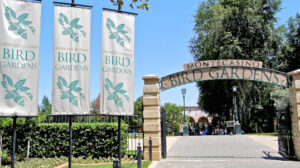Excitement About Johannesburg North Attractions
Excitement About Johannesburg North Attractions
Blog Article
The Best Guide To Johannesburg North Attractions
Table of ContentsThe 9-Minute Rule for Johannesburg North AttractionsFacts About Johannesburg North Attractions Uncovered4 Easy Facts About Johannesburg North Attractions Shown10 Easy Facts About Johannesburg North Attractions DescribedNot known Facts About Johannesburg North AttractionsJohannesburg North Attractions - The Facts
The city grew on the edge of the Witwatersrand Key Reef, a below ground stratum of gold-bearing quartz-silica empire that arcs for hundreds of miles underneath the Highveld - Johannesburg North attractions. Many of the gold mines in the city stopped operation in the 1970s, however in its day the Witwatersrand gold market accounted for more than 40 percent of the world's annual gold manufacturing.Johannesburg has a warm climate. Summer season temperatures balance regarding 75 F (24 C); wintertime temperatures balance about 55 F (13 C) and just periodically dip listed below cold. The city appreciates concerning eight hours of sunlight per day in both wintertime and summer. Rainfall averages about 28 inches (700 millimetres) per year, however the total varies significantly from year to year.
What rain the city obtains falls nearly solely in the summer season months, commonly in magnificent late-afternoon electric storms. Air pollution positions a significant problem, specifically in the wintertime months, when thermal inversions restrain the westward flow of air from the Indian Sea. Contamination is most extreme in the densely worked out Black towns on the city's periphery, where several residents still rely upon coal for gas.

Johannesburg North Attractions Fundamentals Explained
The balance of the city is inhabited by whites. Lodging varies in character and top quality.
Physical growth, although somewhat restricted by transport, proceeded promptly as immigration to South Africa, and Johannesburg particularly, enhanced significantly. This issue was solved in the 1930s when the car was introduced in automation to South Africa. Automobiles were, generally, confined to the rich, and permitted them to relocate to the north of the city and commute right into the centre.
A lot of inadequate suburbs were mixed, with bad blacks and whites living together, although the affluent residential areas were normally booked for whites.
The estimated population of the region is 200,000, [] yet the variety of people residing in the inner city on a casual basis is unidentified, as lots of are illegal immigrants. Many higher-income residents and white people have transferred to the northern suburbs and have been replaced by lower-income black individuals. The joblessness, education, and age accounts of the area are all unknown, due to the trouble of obtaining trustworthy info concerning the location.
What Does Johannesburg North Attractions Do?
Yeoville and Bellevue have a mix of apartment or condo buildings and single residential units on small great deals. The region is located on a mountainous divide that runs from eastern to west.

Johannesburg Stadium, a training school for both the Golden Lions and Orlando Pirates, is adjacent. The eastern residential areas of Johannesburg are situated in the city's 7th [] and 9th [] areas. The location is also functionally integrated with East Rand border towns beyond the main boundary of Johannesburg, such as Bedfordview and Edenvale (both component of Ekurhuleni Metropolitan Town).
Johannesburg North Attractions Fundamentals Explained
R. Tambo International Airport). The eastern residential areas are several of the earliest locations of Johannesburg, there are huge communities of Jewish and other European backgrounds, the find out here bulk of the population is English speaking. There are 3 golf programs in addition Read More Here to a number of secured ridges with viewsites. There are several strong and up-market amusement and purchasing areas in the eastern such as the Eastgate Mall and the Greenstone shopping center.
Initially developed to house male migrant employees, several have been enhanced as homes for pairs and family members. The residential area was not historically permitted to produce employment centres within the area, so practically all of its residents are travelers to various other parts of the city.
Little Known Facts About Johannesburg North Attractions.
The N1 Western Bypass connects the northern residential areas with the north-western suburbs. The suburbs in the north suburbs are mainly formal, without considerable areas of casual real estate, or housing that does not have a long-term structure. Although this is a well established location, there is a trend of land best site usage modification from residential to industrial, specifically along primary arterial roads and around well established nodes.
The area is well linked to roadway networks, specifically along the north-south axis created by the M1 and N1. Roadways to the eastern and west are less well developed, as there are no highways travelling because direction. In the direction of the north border of the city, the thickness of growth decreases, leaving large areas of undeveloped land around Midrand.
Not known Incorrect Statements About Johannesburg North Attractions
, which is located on a hillside ignoring the inner city and Hillbrow.
Report this page